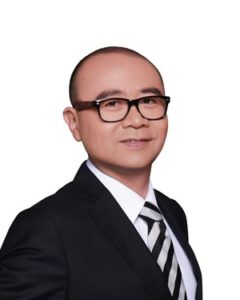The number of substantive consolidation bankruptcy cases of affiliated enterprises in mainland China has gradually increased since 2014. Substantive consolidation bankruptcy means disregarding the independent corporate personality of all affiliated members and treating them as the same enterprise in bankruptcy treatment, so as to pay off debts to creditors in a fair manner, regarding an affiliated enterprise bankruptcy case with significant corporate personality confusion.
Since regulations on substantive consolidation bankruptcy proceedings are only specified in the Minutes of the National Court Work Conference on Bankruptcy Trials published by the Supreme People’s Court at present, and provisions of the minutes are mostly non-specific, courts and administrators in different regions have various ways of handling procedural details, and in practice, the creditors and the debtors often have doubts in this regard.

Partner
Jingtian & Gongcheng
For example, with regard to the modes of initiating substantive consolidation bankruptcy, the minutes do not specify the boundary of the applicant or whether a court may directly initiate consolidation bankruptcy according to its authority. In practice, there are three main initiation modes:
Separate bankruptcy following consolidation. Affiliated enterprises enter into bankruptcy proceedings simultaneously or successively, and are placed into substantive consolidation bankruptcy proceedings by the court upon application by the administrator or creditors, etc.
This mode is more common in practice. Typical cases include bankruptcy reorganization of six companies, including Jiangsu Textile Industry (Group) Import & Export, which were accepted by Nanjing Intermediate People’s Court, and the Zongheng Group bankruptcy reorganization case accepted by Shaoxing City Intermediate People’s Court.
Under this mode, courts have the following ways to designate administrators:
(1) “fresh start”, which means withdrawing all of the original bankruptcy administrators and appointing a new administrator to handle a substantive consolidation case;
(2) “partial retention”, which means retaining an administrator (usually the administrator of the core controlling enterprise) to handle a substantive consolidation case, and removing the remaining administrators;
(3) “complete retention”, which means appointing administrators of all affiliated enterprises as joint administrators for a substantive consolidation bankruptcy case. For example, in the Zongheng Group bankruptcy reorganization case, the court retained the three bankruptcy administrators originally designated, and appointed one of them as the lead administrator thus allowing them to jointly participate in the subsequent proceedings.
Consolidated application and acceptance for consolidation. An applicant applies for bankruptcy of multiple affiliated enterprises and the court reviews whether these companies meet substantive consolidation bankruptcy requirements before acceptance; if so, the ruling will allow affiliated enterprises to proceed.
Under this mode, there are relatively high requirements in the early stage of preparation for the application, so cases are relatively rare, but there are examples. In October 2014, Judger Group and its two affiliated enterprises jointly applied to Wenzhou Intermediate People’s Court for bankruptcy; in February 2015, Wenzhou Intermediate People’s Court accepted the reorganization application of the three enterprises and appointed the same administrator; thereafter, the court began the substantive consolidation reorganization of the enterprises after a creditors’ meeting vote and discussion by the Judicial Committee.
In addition, in practice, there were separate applications submitted for bankruptcy of many affiliated enterprises, but after a review, the court found that the companies met the substantive consolidation bankruptcy requirements, and consequently initiated proceedings.
Under this mode, the court may directly designate an administrator while deciding to accept the case. Considering that most substantive consolidation bankruptcy cases are significant and complex, for which an administrator must have excellent professional skills and experience, courts generally prefer to select administrators by competitive election (or by random draw in ordinary cases).
Placing an individual enterprise first into bankruptcy proceedings and then other companies. This means that after an individual enterprise is placed into bankruptcy proceedings first, other affiliated enterprises are placed into the bankruptcy proceedings that have already been initiated.
For example, in a consolidation reorganization case in a Shanghai court for which the author acted as an agent, a company entered into bankruptcy proceedings first, and after taking over the firm, the administrator found that there was significant corporate personality confusion between the enterprise and the other five affiliates, so the administrator applied for placing all six into the consolidation bankruptcy proceedings.
In practice, courts are more cautious about this mode, and mostly initiate the proceedings according to the application of administrators or creditors and, to a lesser extent, their authorities. Shenzhen Intermediate People’s Court even specifies in the Work Guideline on Trial of Corporate Reorganization Cases (for Trial Implementation) it published that consolidation reorganization shall not be applicable if an affiliated enterprise has entered into reorganization procedures. But no applicants from other member enterprises have applied for consolidation reorganization.
Under this mode, the administrator in the original bankruptcy proceedings continues to act as the administrator for the consolidation bankruptcy case.
The minutes specify that the court shall notify interested parties upon receipt of an application and organize a hearing, regardless of whether the applicant of the substantive consolidation bankruptcy is an administrator, debtor or creditor. Since the initiation of substantive consolidation bankruptcy will have a significant impact on the scope and order of the distribution of bankruptcy assets, we suggest that relevant interested parties (whether contributors or creditors) should actively participate in the hearing procedures and give their opinions to the court and administrators, so as to fully safeguard their legitimate rights and interests.
In conclusion, since there are different modes of initiating the substantive consolidation bankruptcy process, relevant parties shall prepare a bankruptcy application plan according to the actual status of the enterprise and the common hearing method of the corresponding bankruptcy court, as well as the local conditions and the circumstances of the case, so as to improve the efficiency and success rate of the application.
Xu Bangwei is a partner and Zhang Xiaotong is a paralegal at Jingtian & Gongcheng

34/F, Tower 3, China Central Place
77 Jianguo Road, Beijing 100025, China
T +86 10 5809 1266
F +86 10 5809 1100
E-mail:
xu.bangwei@jingtian.com





















